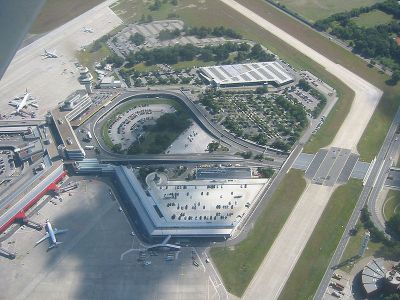With growing
populations and consumption rates, air traffic in Europe is expected to
grow rapidly towards 2050, particularly as more people outside the
continent become increasingly able to travel. However, this growth will
be faced with dwindling resources, more expensive fossil fuels and
stricter environmental expectations, requiring a strong vision for how
the airports of the future will operate. While EU-led projects such as
Single European Sky ATM Research (SESAR) and Clean Sky are already
addressing growth expectations up to 2050, there is a need to put in
place radical solutions for airport operation beyond this milestone.
With this in mind, 'The 2050+ Airport' (2050AP),
a recent EU-funded project, investigated revolutionary solutions to
prepare airports for 2050 and beyond. It aimed to enable 90 % of
European travellers to complete their intra-European door-to-door
journey within 4 hours.
This requires better connectivity between the critical nodes or
hubs, a larger network of airports, and better links with other modes of
transport. It also calls for a seamless provision of services to
upgrade door-to-door travel time, considering as well sustainability and
user friendliness. Underlining that future airports must address these
objectives, the project team developed three concepts required to bring
this vision to fruition.
The first concept centred on a time-efficient airport that maximises
the value of time through efficient and effective air transport
operations. The second focused on cost effectiveness, proposing an
airport with extremely low operating costs and optimal revenues. The
third envisioned an ultra-green airport with self-sufficient energy
needs. Inherent in the third concept are the ideas of climate neutral
operations and low sound pollution.
To achieve its aims, the project team analysed a baseline reference
airport and identified all operations, processes and bottlenecks that
need to be improved. It then defined the methodology needed to develop
the concepts and worked on validating them. The latter involved
assessing the value of concept ideas vis-à-vis stakeholder needs and key
performance indicators, as well as analytical methods to further refine
and quantitatively assess the concepts.
Three workshops were organised to disseminate the project's results
and assess its feasibility. When the future comes, European airports
will be ready for it.
 EN
EN  CS
CS DE
DE ES
ES FR
FR HU
HU IT
IT PL
PL PT
PT РУ
РУ SK
SK TR
TR УК
УК AR
AR 中文
中文







